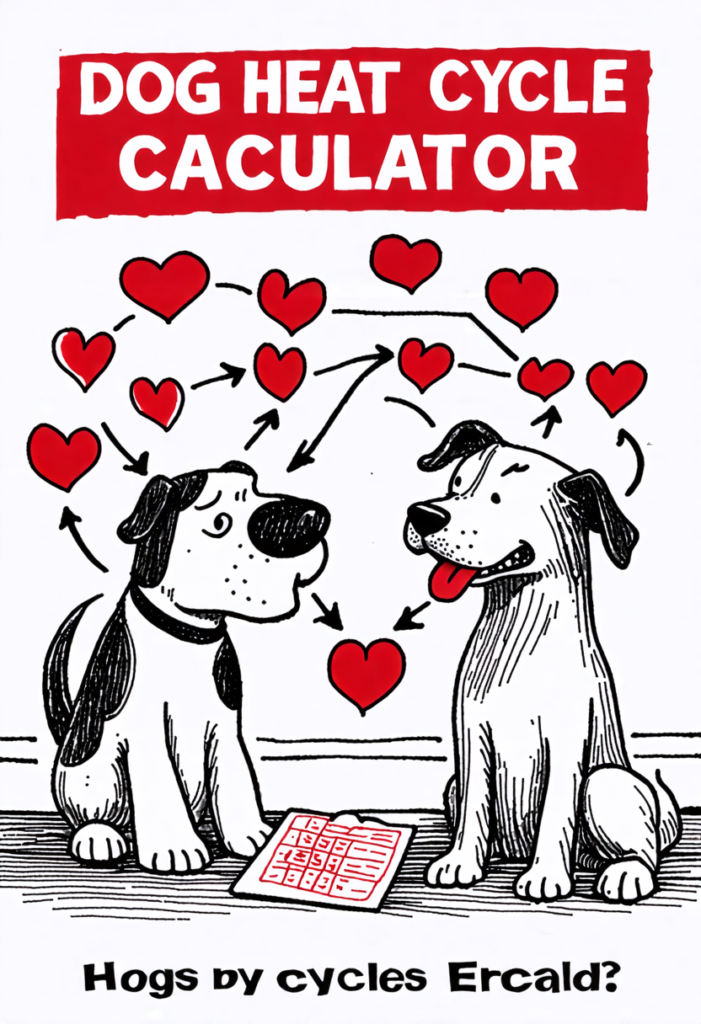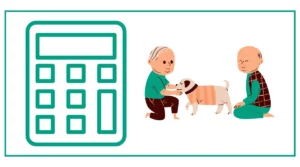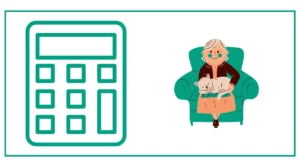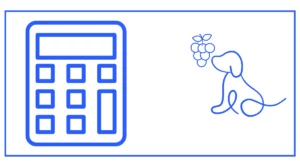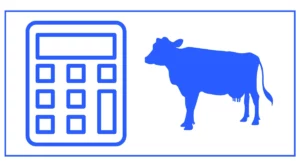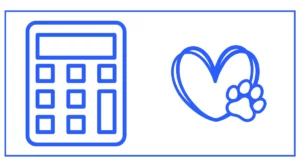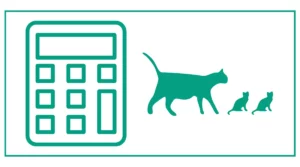Dog Heat Cycle Calculator
Six-month-old bitches mature and start their first heat cycle. However, it varies by dog.
Miniatures grow faster. Four-month-old chihuahua and pomeranian females can cycle. However, great Danes can wait two years before their first heat.
This dog heat cycle calculator can help you calculate the duration of the heat cycle and the date of the next heat cycle.
Select the date of the first day of the heat cycle and enter the number of months you know. You can select no option if you do not know.
The calculator will calculate the current dog heat cycle duration and the next expected heat cycle.
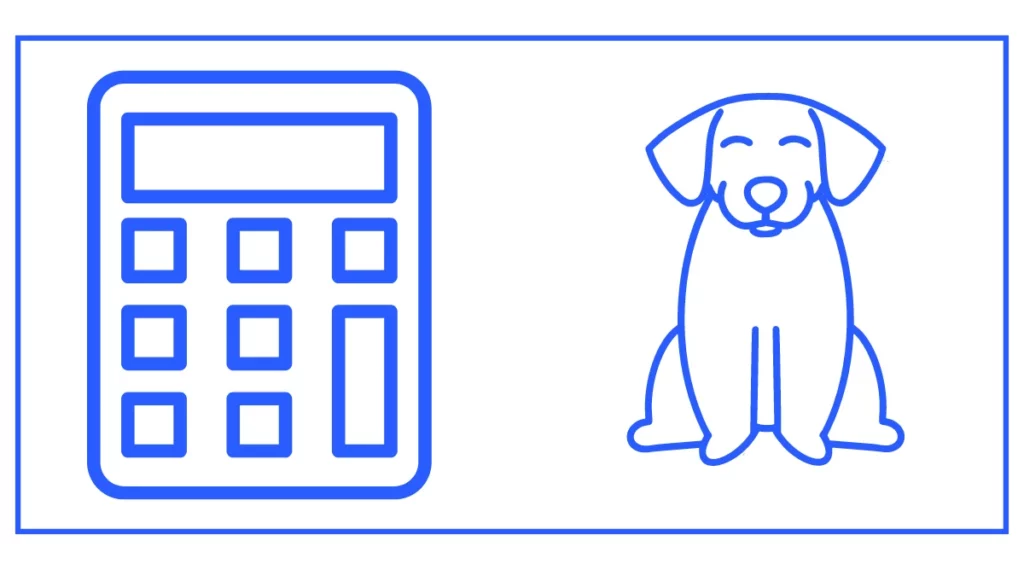
You might want to find out the cost of lawn mowing.
The dog heat cycle is the reproductive cycle of female dogs. It’s a natural process that occurs regularly throughout a dog’s life, typically beginning when they reach puberty. During this cycle, female dogs become fertile and capable of breeding.
Stages of the Dog Heat Cycle
The estrous cycle consists of four distinct stages:
- Proestrus
- Estrus
- Diestrus
- Anestrus
Each stage plays a specific role in the reproductive process and is characterized by different hormonal and physical changes.
Proestrus: The Beginning of the Heat Cycle
Proestrus is the first stage of the dog heat cycle. It typically lasts for about nine days but can range from three to 17 days. During this stage, you may notice:
- Swelling of the vulva
- Bloody vaginal discharge
- Increased attention from male dogs
- Your dog may hold her tail close to her body
During proestrus, female dogs are not yet receptive to breeding. However, they start to attract male dogs due to the hormonal changes occurring in their bodies.
Estrus: The Fertile Period
Estrus is the stage when your female dog is receptive to breeding. This stage usually lasts for five to nine days. Key characteristics of this stage include:
- The vaginal discharge may change from bloody to straw-colored
- The vulva becomes softer and more enlarged
- Your dog may “flag” her tail to the side
- She becomes receptive to male dogs
Ovulation typically occurs during this stage, making it the fertile period of the cycle. If you’re planning to breed your dog, this is the optimal time for mating.
Diestrus: The Post-Ovulation Stage
Diestrus begins after the fertile period and lasts for about two months. During this stage:
- The vaginal discharge decreases and eventually stops
- The vulva returns to its normal size
- If the dog has been bred and is pregnant, this is when the pregnancy develops
Even if the dog is not pregnant, her body goes through hormonal changes as if she were. This is due to the production of progesterone, which remains elevated for several weeks.
Anestrus: The Resting Stage
Anestrus is the period between heat cycles. It’s essentially a time of reproductive inactivity, lasting anywhere from two to six months. During this stage, there are no visible signs of reproductive activity.
How Often Do Dogs Go Into Heat?
The frequency of heat cycles can vary depending on the breed and individual dog. On average:
- Most dogs go into heat twice a year, or about every six months
- Small breeds may cycle three times a year
- Giant breeds may only cycle once a year
It’s important to note that the first few cycles may be irregular. It can take up to two years for a dog’s cycle to become regular.
When Do Dogs First Go Into Heat?
Female dogs typically experience their first heat cycle when they reach puberty. This can occur:
- As early as six months of age in small breeds
- Around 18 to 24 months in larger breeds
The onset of the first heat cycle can vary widely between individual dogs and breeds. It’s best to consult with your veterinarian about what to expect for your specific dog.
Signs Your Dog is in Heat
Recognizing the signs that your dog is in heat is crucial for proper management. Here are some common indicators:
- Swelling of the vulva
- Bloody or straw-colored vaginal discharge
- Increased urination
- Changes in behavior (may become more affectionate or anxious)
- Increased attention from male dogs
- “Flagging” (holding the tail to the side)
Using a Dog Heat Cycle Calculator
A dog heat cycle calculator can be a useful tool for tracking your dog’s cycles. It can help you predict:
- When your dog will go into heat next
- The optimal breeding time
- When to expect the end of the current cycle
To use the calculator effectively, you’ll need to know the start date of your dog’s current or most recent heat cycle. If you know your dog’s average cycle length, that information can make the prediction even more accurate.
Managing Your Dog During Heat
Proper management of your dog during her heat cycle is essential for her health and to prevent unwanted pregnancies. Here are some tips:
- Keep her away from intact male dogs
- Use doggy diapers to manage the discharge
- Provide extra attention and exercise (on a leash)
- Be prepared for potential behavior changes
To Breed or Not to Breed?
If you’re considering breeding your dog, it’s important to make an informed decision. Breeding should only be done by responsible dog owners who are prepared for the commitment. Consider:
- The health and genetic background of your dog
- The responsibilities of caring for a pregnant dog and puppies
- The costs associated with breeding and whelping
- The challenge of finding good homes for the puppies
Always consult with a veterinarian before deciding to breed your dog.
Spaying: An Alternative to Heat Cycles
Spaying is a surgical procedure that removes a female dog’s reproductive organs. It’s a common practice that offers several benefits:
- Eliminates heat cycles
- Prevents unwanted pregnancies
- Reduces the risk of certain health issues, including some cancers
However, the decision to spay should be made in consultation with your veterinarian, considering your dog’s age, breed, and overall health.
When to Spay Your Dog
The ideal age for spaying can vary depending on the breed and individual dog. Traditionally, dogs were spayed around six months of age, before their first heat cycle. However, recent research suggests that for some breeds, especially larger ones, it may be beneficial to wait until after the first heat cycle or even until the dog is fully grown.
The Role of Hormones in the Dog Heat Cycle
Understanding the hormonal changes during the heat cycle can provide insight into your dog’s behavior and physical changes. Key hormones involved include:
- Estrogen: Rises during proestrus, causing the initial signs of heat
- Luteinizing Hormone (LH): Triggers ovulation
- Progesterone: Rises after ovulation and remains elevated during diestrus
Progesterone Testing
Progesterone testing can be a valuable tool for breeders to determine the optimal breeding time. It involves measuring the progesterone levels in the blood, which rise significantly just before ovulation.
